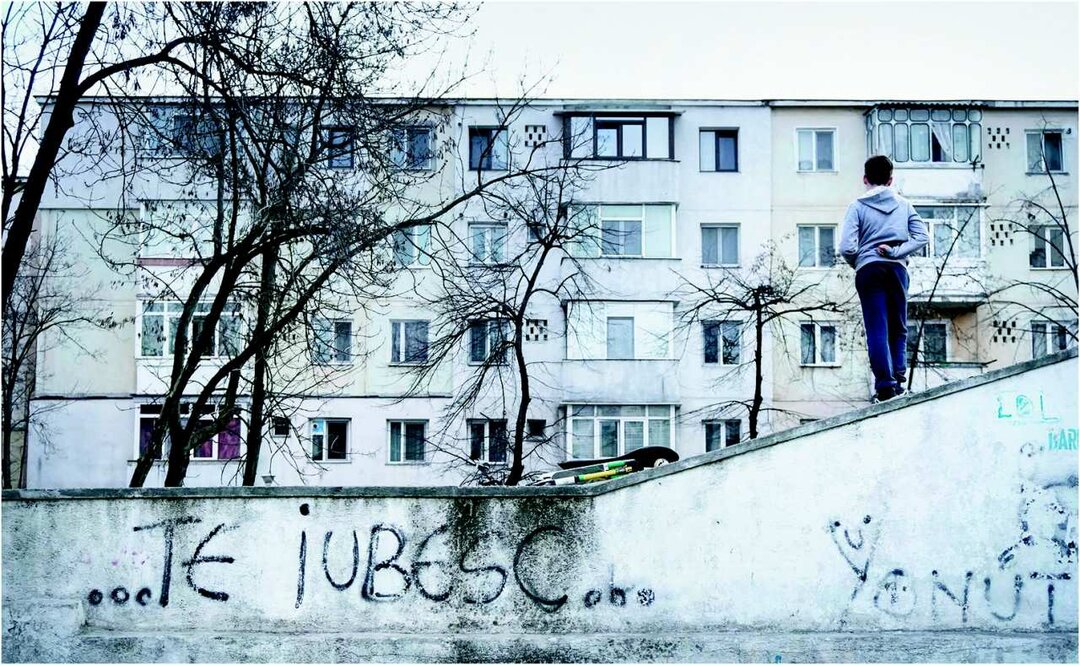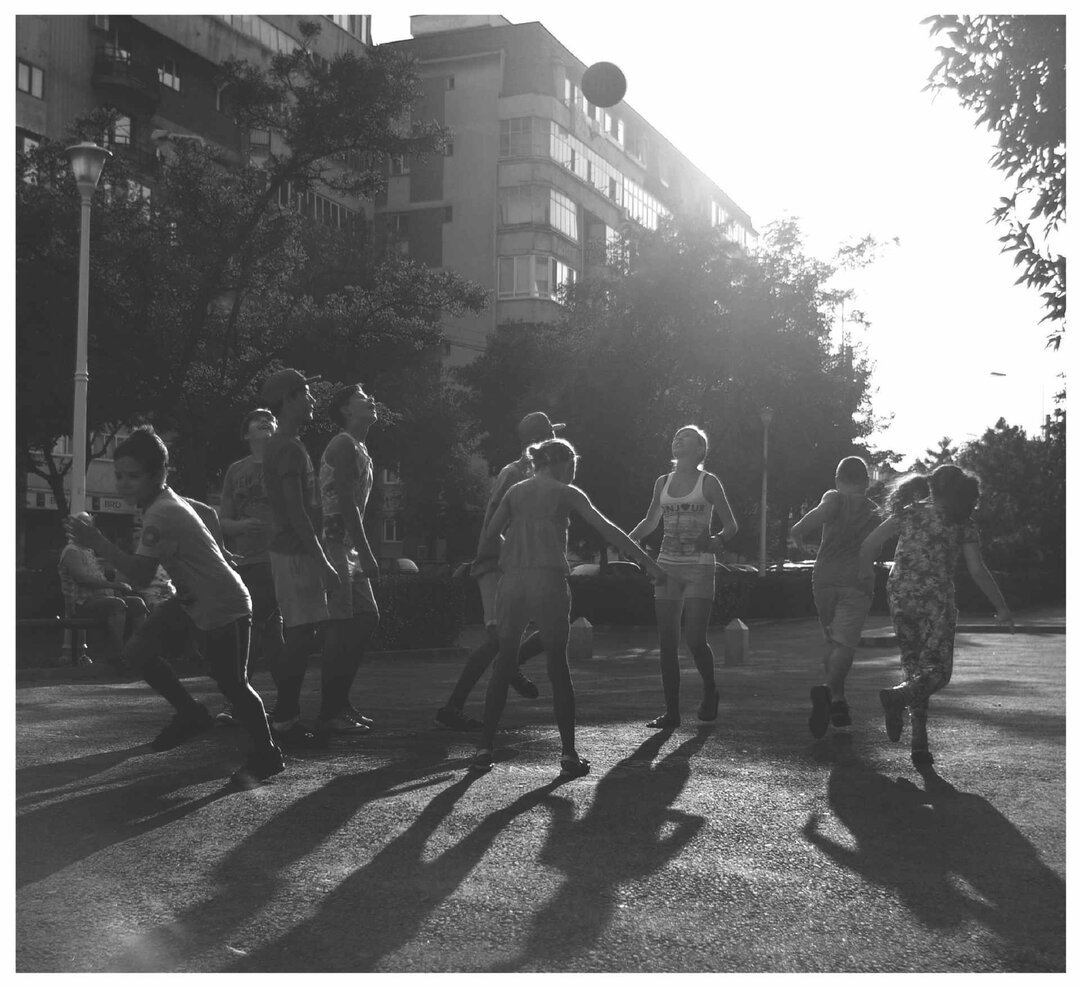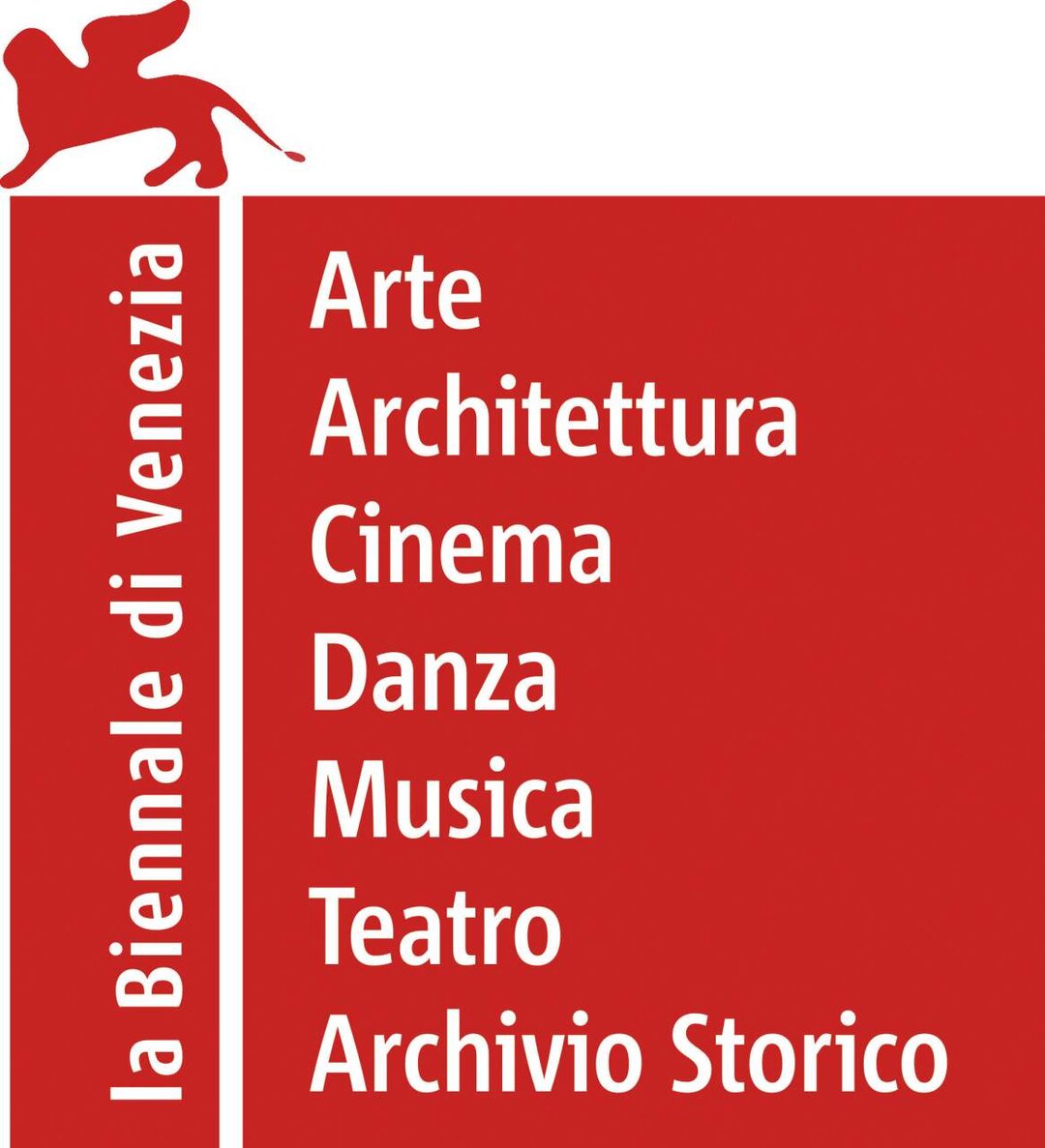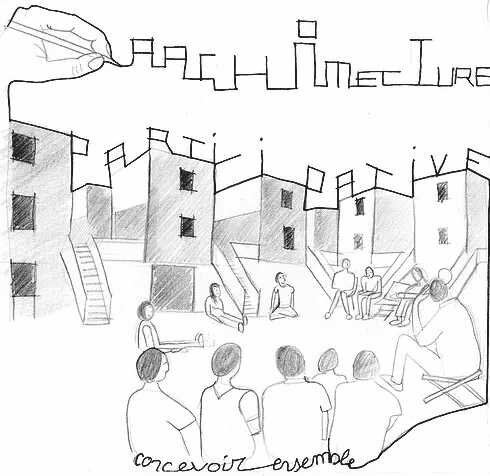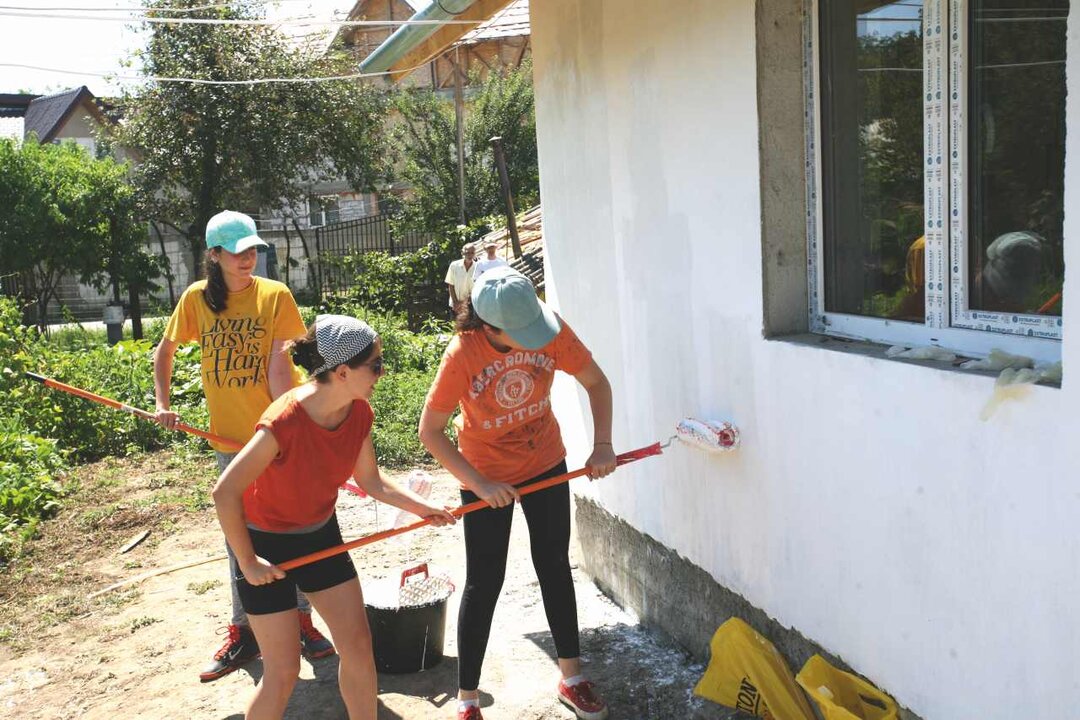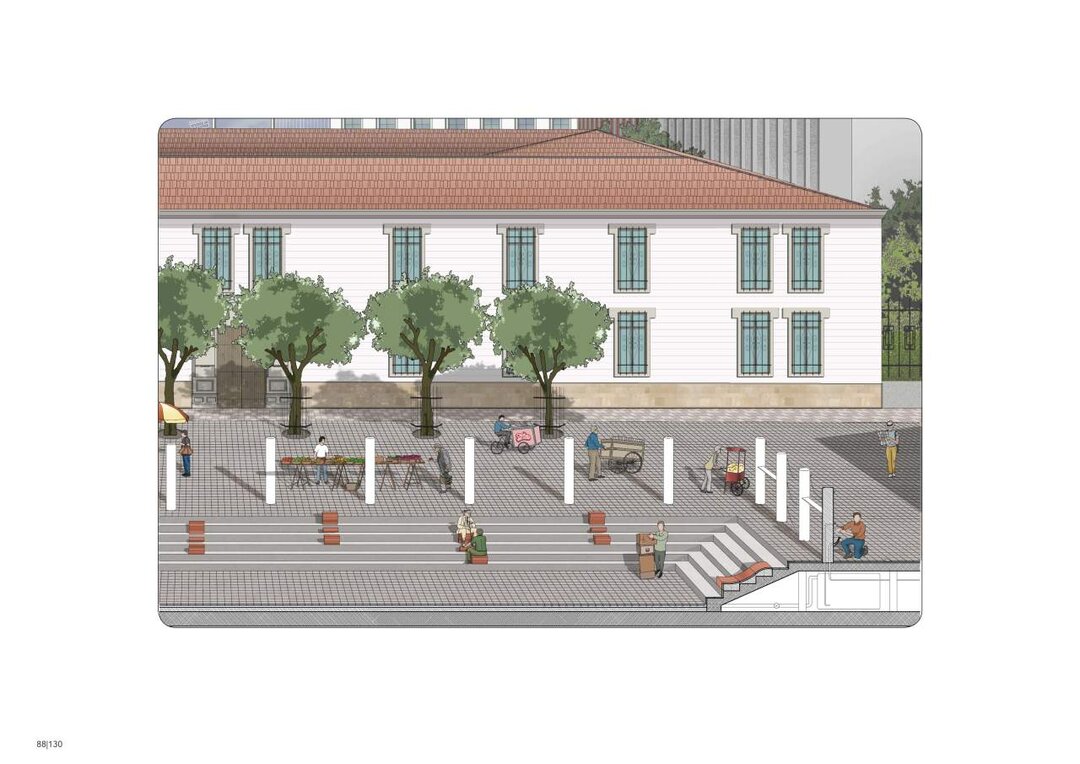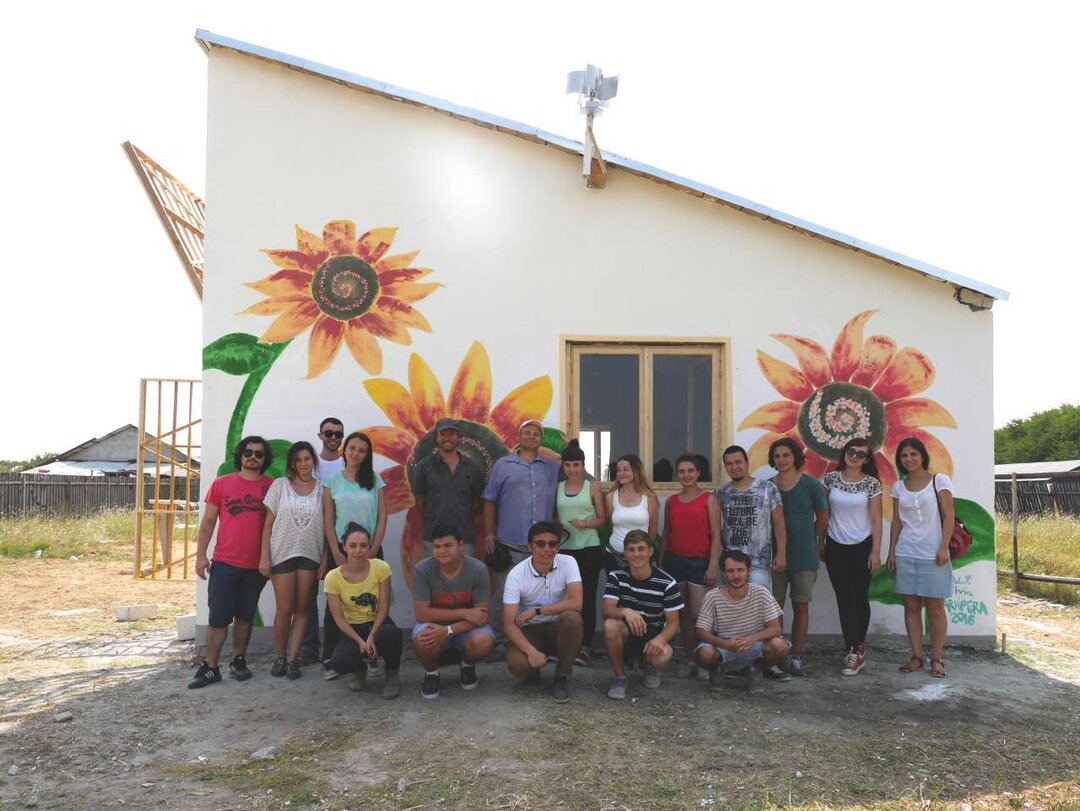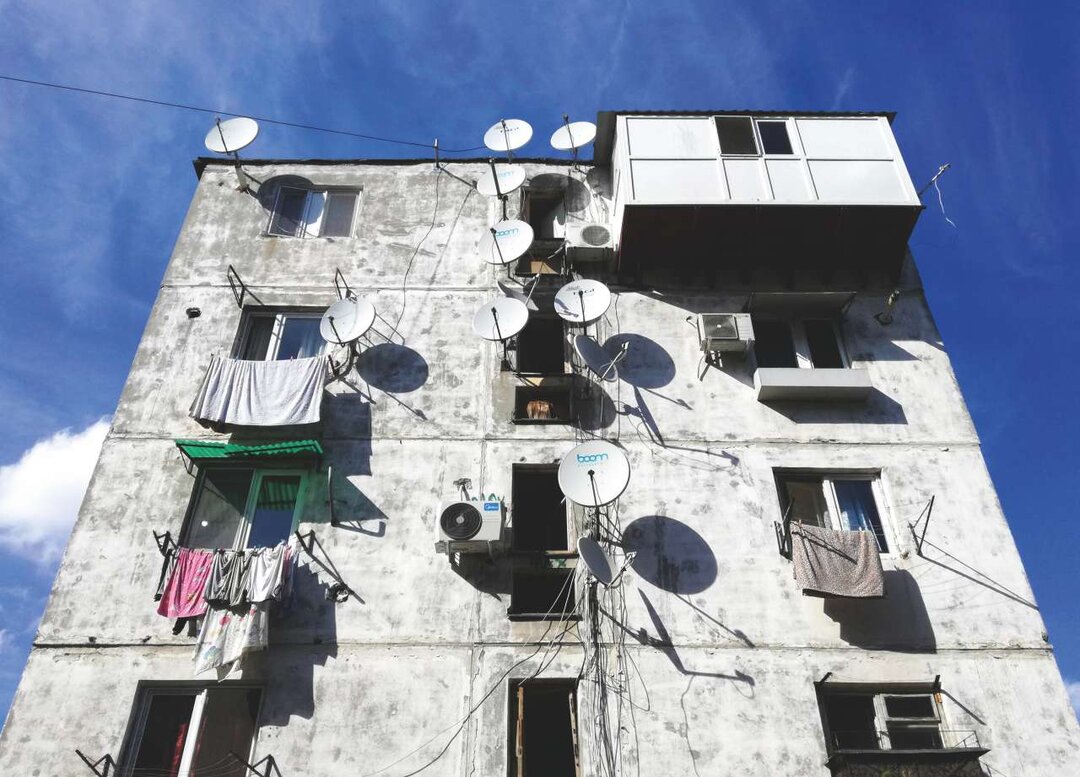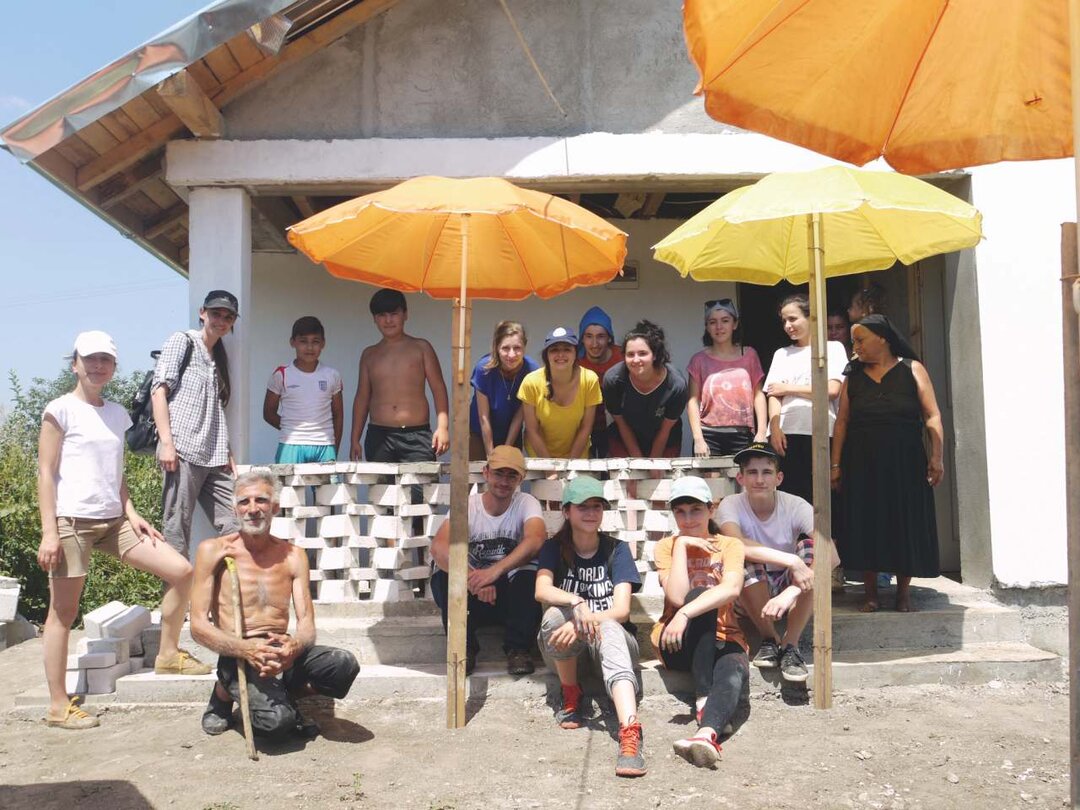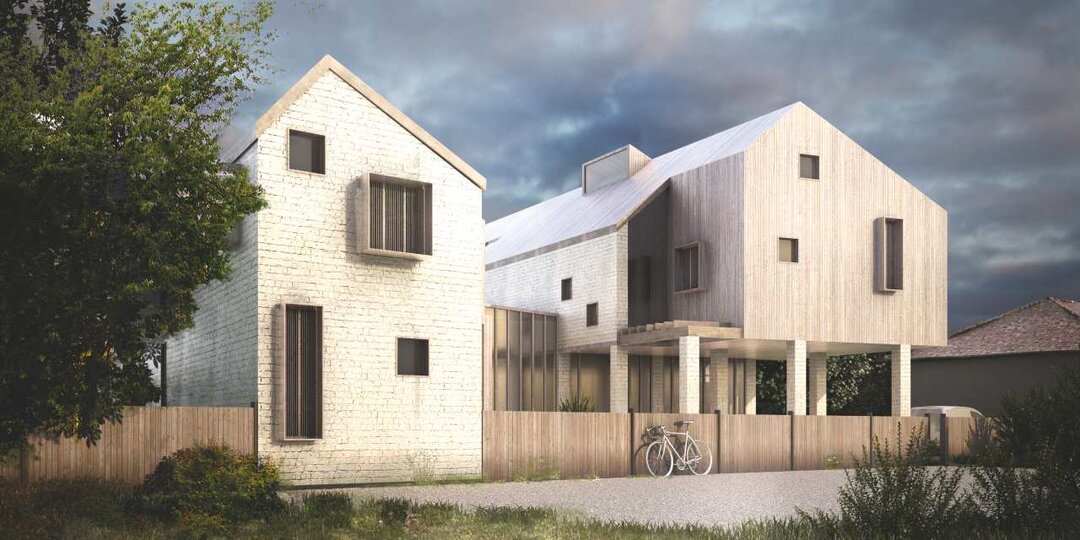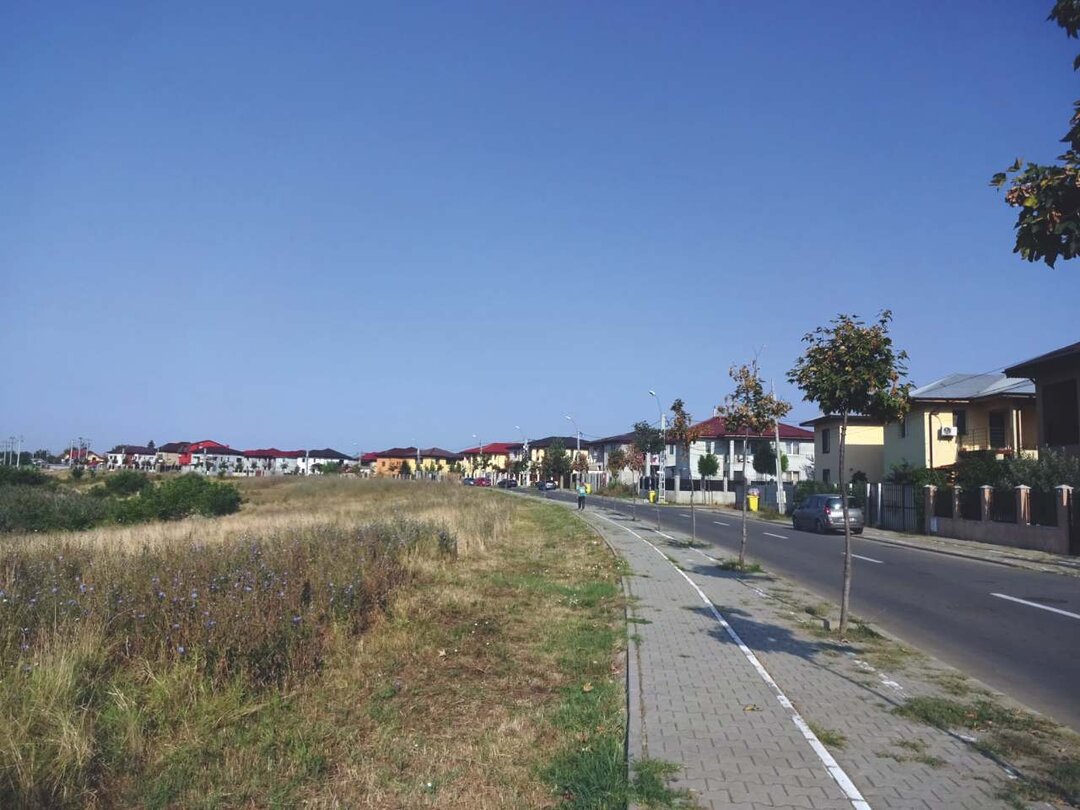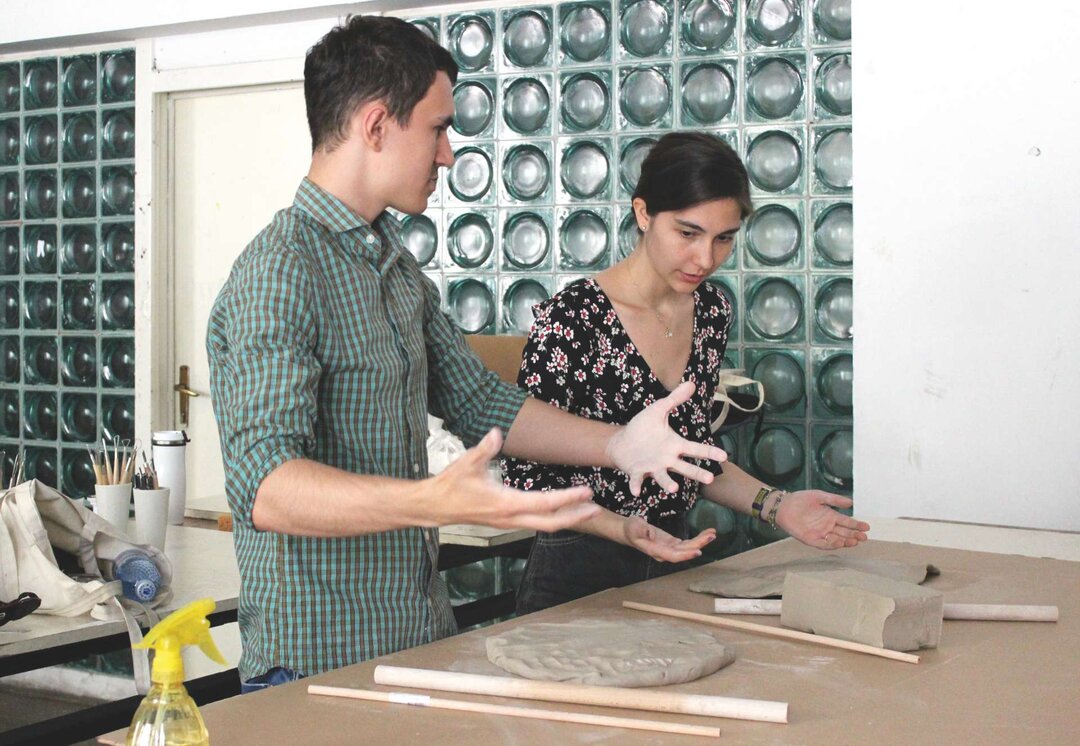
Architects and Communities
text and foto: Augustin IOAN

My dear younger colleagues, please pardon the wise and knowing tone which I seem to have acquired with age, but when such a topic is being debated, I feel that I, too, have something to share. Let me, therefore, set before you a number of views on participatory architecture that is immersed in the social life and supported by the architect.
I. A plea in favour of pro domo and pro bono
First of all, as architects, you will be under a legal and contractual responsibility towards your client, whom you will have to assist as consultants in achieving his/her ideas. Those who are under the impression that the client’s role is to finance their auctorial delirium are nothing short of pathetic. They will usually tell you that they have not been understood or, worse, that they did not want to make any compromises or to prostitute themselves. Not to build, for them, becomes the highest virtue and the very proof of their morality. Do not believe them. In fact, assuming they ever had any real clients, they were incapable of minimum negotiation efforts, of dialogue, of diplomacy. A successful house is a negotiated house, and, unless the architect in question is in charge of designing the house of his own dreams (or nightmares) – which is very rarely the case – in all the other cases you must bear in mind that the final product, whether it is that gentleman’s house or the House of our Lord, is not yours, but theirs. It is they that the house should represent, with all their social, economic and image-related aspirations, and, along with them, you, who were able or not to elevate the level of the final product above the client’s level, if possible.
In your capacity as representatives of your client, you may find yourself in the happy case when your client is unknown or collective. Whether you engage in real-estate development or design a public monument or even an instance of the public space proper, you will design for a multi-faceted, but unknown community. You will only get to know, at the most, the leaders of that community (mayor, priest, financer). How will you be able then to lend a voice and a face to that desirable self-image nurtured by that community? You will construct it mentally – you are intellectuals, among other things. You will recompose it from many others, to arrive at a multi-faceted image. You will presumably be able to elevate that community’s level of self-representation up to its highest point, where lies how that community wishes to be seen, and not how it is actually seen by others – be that impression real or fictitious – because in the latter case the outcome will generally be an insult. However, bear in mind that you should not represent a community beyond its capacity for self-representation, because the final structure will never be accepted by the community as its own. It is by reason of this rupture between built structures and the community that we are now faced with squatting, with refusals to appreciate monuments for what they are, i.e. condensers of collective memory, and with disconnection from our contemporaneity. A community falsely represented by its collective edifices will abandon or destroy them as soon as possible.
Consequently, yes, you are indebted to the public space and to the communities from which you come and/or for which you work. For instance, you should know that during the interwar period – an era when many good quality edifices were constructed and many quality books were written, including on architecture, much more, in fact, than in the post-1989 period – it was bon ton for the architect, otherwise a gentleman belonging to the middle class, to do pro bono work for the said community. It is to this gift of time and vocation that we owe, for instance, Trajanescu’s elegant stone churches along Valea Prahovei (Sinaia, Poiana Țapului, Bușteni, Azuga). Architects thought it right to create free of charge for their less fortunate fellow countrymen, in order to resolve a social problem (collective dwellings), or a sanitary, cultural, and even religious one. This capacity for giving has often resulted in masterpieces. Because the quality of a building resides not so much in its cost, as in the intelligence of its design. I urge you to have a look at the resourceful works created by the Rural Studio (Samuel Mockbee, when he was alive, and his students), by Architecture for Humanity, or, in our country, by Habitat and Art in Romania (HAR Foundation) to understand what I mean: to design when you lack any resources, for a noble purpose, i.e. helping your fellow men who also carry within themselves the divine spark as you do, may generate miracles. Miracles, first and foremost, in a professional sense. But these gestures also carry community building virtues, while they are being made, as well as while they are used and preserved. Let me invite you therefore to take part in an active form of social involvement: voluntary work. I need not even refer to the vogue currently sweeping through our country as well of including such an activity in your resume, with the mention that, in the USA, failing this activity, no one employs you in an important position. However, let me also clarify that in our profession voluntary work means directly contributing charitable work and social involvement alongside professional competence of the highest level. It is only there that you will be able to do for others what you wish that others did for you. Remember: whenever you can, give and give yourselves. As architects, it is only from that pursuit that you will derive genuine usefulness and spiritual comfort.
II. Housing Today
If I were asked to tackle the topic of housing today, with a specific focus on collective housing, I think I should address at least a number of issues, which I shall list below in the form of an inventory that might give rise to debates at some point:
1.The conceptual crisis of collective housing (at all levels: community, assisted housing, conditioned by the high level of urbanisation, crisis of the modernist model, failure of the socialist – collectivist vision etc.), hardly ever discussed from a critical perspective;
2.The gated communities crisis (a socially “superior” community’s housing, protected by walls, isolated from the rest of the city). By expansion, the crisis of the prosperous USA suburban housing (with its outcome: the emergence of The New Urbanism. Any new form of settlement – satellite district –fractally reiterates the complexity of the whole, i.e. includes all urban forms, only at a more reduced scale).
3.The new post-Facebook intimacy; the de-dramatisation of the idea of comfort, the refusal to be typical (see Ikea and the other home improvement chains) by embracing DYI (it is in vogue in our country as well: do it yourself, bricolage;)
4. “Democratic” architecture, the “socialism of private space production”: the house is no longer the architect’s privileged domain, since the architect is no more specialized in housing than any of his clients (see Christopher Alexander and his Pattern Language). Information (its production and consumption) becomes a component of housing and even a sign of social status: the screen house.
5. At “Mother Gaea’s breast”: energetic recovery and self-sustainability, enacted in the West, turn the house into a computerised machine for saving and producing energy (the buried house, the heating pump, material efficiency, smart facades, solar/wind energy, energy produced from household waste etc.).
I could also continue with examples of good practices in the field of contemporary residential architecture and its environment:
a) Rural Studio, Herzog / De Meuron, Mahti Senaksenaho, Habitat and Art in Romania Foundation (i.e. sculptor Alexandru Nancu, Augustin Ioan and friends);
b) minimalism, arte povera, “as found” materials (not necessarily natural, but recyclable), “humble” materials: revival of natural materials, a new cultural return to “nature”: adobe, wood, reed, bamboo, as well as massive natural stone;
c) the bricolage-house (Herczeg house, Timișoara); application of philosophical principles to architecture: the pleat/the fold (MVRDV, Mecanoo, Rem Koolhaas); the Möbius and anti-Oedip house: a new approach to the public-private relationship, in Foucault’s sense, resembling the Möbius strip (through a new dosing of the transparency theme, different relationships with the exterior, dissipation of the dichotomy between public and private and/or of the diurnal/nocturnal activities), rediscovery of intermediary spaces (yards, porches, common entrances).
I shall close my list with the following bitter remark. In our country, everything is still to be done and all the errors are repeated: gated communities are emerging, there is no discussion about social housing, the specialists in socio-humanistic sciences are not terribly interested in investigating collective housing after 50-60 years of having had it enforced upon them, the individual dwelling confines itself to being experimental solely in terms of expression, and quite rarely, at that, and not in terms of a new housing model, and the state, through ANL, although it should no longer be on this market, keeps on building the same apartment blocks, only more poorly.
III. Architecture for Charity
For almost two decades, the architecture finding itself in close proximity to religion has mainly amounted to new churches and temples; a thirst for sacred spaces, which is justifiable, considering the atheist drought, has led to the construction of thousands of new places of worship, belonging to all religious denominations. Naturally, the Christian Orthodox ones prevail, but this boom is, perhaps, even more impressive when we look at the Neo-protestant beliefs (and I had the opportunity to do this recently, while conducting my research for an article on this theme). A quite impressive number of mosques have also sprung up, in Dobrogea, as well as in Bucharest. Then the fever passed and the church market died out before any serious and informed discussion could take place, and before my friends, the new theologians, could intervene and bring their authority into a debate. I shall not go into this now.
Recently, however, a new dimension of this proximity to religion has emerged, namely, the social community programmes. I shall not deal here with those programmes which pertain to the very core of a group’s religion, as in the case of the Neo-protestant faith. I shall only refer to this charitable dimension also sprouting up inside the Christian Orthodox faith and having architectural implications. The theological debate on the social doctrine of the Orthodox church in Romania is still ongoing. At Bistrița Vâlcii, about two decades ago, I myself scolded a young nun who was busy chasing away from the monastery precinct a flock of children come begging (the monastery was adjacent to an orphanage), instead of giving them food and nurturing them, happy that her faith has finally found the optimal field for practical application. On the contrary, that nun told me that her role in the monastery was to look after the Saint (i.e. the pious remains of the spiritual patron of that place), not after the little brats outside!
But enough of that. Times change. Accession to the EU has brought along the promise of plenty of money which can also be accessed via social projects. For a while I myself have designed after-schools in some Bărăgan commune, in which some woman priestess was to work. I find it hard to believe that anyone can take better care of a community’s needy than the community itself. When there is only money at stake, the job of single care-taker can also produce monsters, such as the woman who killed the baby placed in her failed mother arms. Community care reinforces the warp of social security precisely because those in need are from among its members, and not foreigners. This care is also placed in the vicinity of their dwellings, which ensures its social visibility and prevents it from being abandoned. This is why a number of charitable projects have sprung up here and there, dedicated to children or to the elderly or to both these categories in search of protection. If they are healthy, the children and the elderly can take care of each other: at Ghencea church, near which I have lived for 12 years and whose story I told in a series aired on the TVR Cultural channel dedicated to the Christian Orthodox architecture in Romania, a small shelter for the elderly is daily enlivened by the presence of the community’s less fortunate children, who are brought there to say the Our Father prayer before lunch and then to do their homework for the next day, under the strict supervision of the substitute grandmothers in the shelter, extremely happy with their new role.
Thanks to the same local church initiatives, social edifices proper are also emerging, under the supervision of the church’s head priest. They will be able to take over from the socially diminishing state several of its charitable functions. It is exactly what father Stelian Băducu is doing in Urziceni and in the nearby villages: he identifies the needs of those impoverished communities, accesses European funds and, hopefully, will soon begin to build. As far as I know, he is not the only one actively looking, assisted by architects, for the proper methods to impart a local dimension to the community building phrase. Because in places like these, where the only social magnet is the church, it is around the church that collective pity, charity and care must gather. The sustainability of these projects entirely depends on this common care of people for their fellow men lagging behind.
A second line of concern which may give rise to construction projects supervised by the church is, in my opinion, emergency architecture. This phrase has been lately used by a number of charity groups which have been running from one tsunami to another, from one earthquake to another and from one exile to another to provide shelter. Emergency shelters also have a tradition of their own, a collection of good practices and some theory to ground them. In our country, the natural disasters that have occurred have only managed to highlight the scale of the problem. The state is not able to manage an instantaneous crisis of this kind. It cannot do so in the grand United States of America (see the Katrina case), let alone in Romania, where it lacks authority, resources, and also the common sense of admitting these deficiencies. But are these deficiencies entirely incumbent upon the state? I was unable to find any task force set up by the architects among themselves to deal with these cases. At least we, the professors engaged in the UAUIM’s master’s degree course in sacred space (2001-2009), could have published a catalogue with the best post-catastrophe scenarios, drafted by my younger colleagues in the eight years of the course, under the guidance of Professor Florin Biciușcă, PhD and mine. I believe architect Alina Florea has in fact put together such a catalogue, as part of a doctoral thesis on the subject and in preparation of her current work undertaken in collaboration with Habitat for Humanity.
Because, I must repeat myself, this is not about house or container designs, however competently designed they may be. This is primarily about a scenario meant to be enforced instantaneously and automatically and to function like clockwork precisely because it has been adjusted and rehearsed numerous times before. Who is the coordinating authority? Where will the temporary shelter kits be stored? How temporary is the temporary, considering that in such places as the Istanbul outskirts, immediate help tends to become long-term, and the shelters in Split have become luxury villas over time? How will these kits be brought in the disaster area? Who will assemble/inflate/deflate them (the procedures are infinite) and how fast? Are the shelters at the end of this long and complicated chain made of evanescent materials, and, therefore, single use (such as the cardboard houses of Shigeru Ban, in Nepal)? Or are they, on the contrary, made of sustainable materials and can be reused in the following disasters (in which case one also has to come up with a strategy for decommissioning the camps, sometime after the catastrophe)?
We don’t know. That is, the state doesn’t know. Architects themselves do not consider architecture for charity a valid topic. But institutions such as the Church might know. The Church, like the state, has a two-fold representation: local and national. Unlike the state, it has credibility and can mobilize the help. It is wrong for the state to reward the lack of care shown by the local authorities who, between two catastrophes, do nothing to prevent the future ones. It is wrong for the state to give money to those who have not insured their property out of laziness, ignorance or simply because they have built without a permit. Village architecture is, to an overwhelming extent, simply illegal. The state had the means to enforce harsh punishments on the perpetrators and their accomplices, the local authorities. It failed to do so. It was in cahoots with them. The state belongs to those who speculate our tears and misery in the face of disasters, and then spends the common money to perpetuate the illegality.
Help must be provided by the community itself and only to those who have already begun to help themselves. That missing helping hand must be extended to those who are already (re)building themselves. Those who beg money from the State in order to live should be deprived of the electoral alms coming from our
taxes. Politicians should give money personally to the lazy and the beggars, if they believe it to be right, and should stop being generous from other people’s wallet. The army should stop putting up dams for those who cannot put them up themselves. Public money should no longer be squandered on shady social cases that look well on TV. Because, unfortunately, not one person from those who have been amassing money, from the budget or from outside it (State, television, churches), has ever come forward to account for that money, collected by sentimentally blackmailing the poor...
Giving out of his/her own time and caring for his/her fellow men is, for an architect, the most elegant way of being in the polis. We have a fragile tradition in this respect, and it goes back to the interwar period. Some of us, who have worked for churches, know very well that this type of design work did not bring us instantaneous enrichment; as a rule, it yields no staggering profits and the architects are often kindly asked to work pro bono. But a small portion of that predatory, ferocious architecture intended for real estate speculation must be somehow compensated for and expiated. Ideally, an architect should engage in both pursuits. A most praiseworthy effort on the part of OAR or its subsidiaries would be for it to submit offers of pro bono work to social care institutions such as Church. This is still not happening. Care still fails to be systematic, and generosity has yet to find a collective voice and to produce tangible edifices. It still doesn’t pay to be kind to your fellow men.


